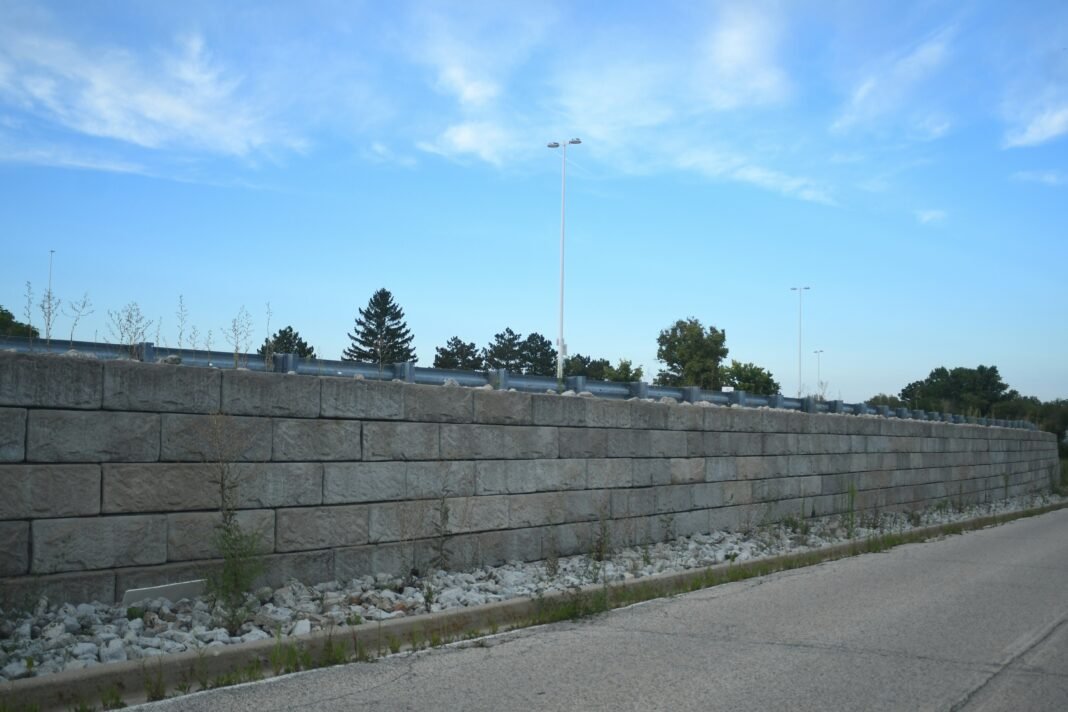There is nothing quite like reclaiming a sloped yard. That tricky, unusable patch of earth, which usually just collects runoff and causes mowing headaches, can be transformed into a functional, beautiful terrace or a level patch perfect for the kids’ swing set. The key to this transformation, of course, is the mighty retaining wall.
While the idea of levelling out that troublesome slope with a DIY project is appealing, attempting a complex professional retaining wall solution without proper knowledge can lead to serious headaches – and costly fixes down the track. A retaining wall isn’t just a stack of blocks; it’s a structural element designed to hold back thousands of tonnes of saturated earth. Get it wrong, and you risk everything from minor bulging to catastrophic collapse. Nobody wants to spend their weekend fixing a wall they built just six months prior.
This article is about helping you sidestep those common, painful errors that often turn a weekend project into a structural nightmare. Whether you are thinking about tackling a small garden bed or a major structural boundary, understanding the pitfalls of retaining wall installation is the first step towards a job well done. We’ll cover everything from the paperwork you need to the crucial role of drainage, ensuring your wall stands strong for decades to come.
Planning pitfalls: getting the groundwork right
Before you even think about ordering materials or digging the first scoop of earth, the planning stage is where most DIY enthusiasts trip up. Retaining walls are serious structures, and they require serious preparation. If the planning is flawed, the entire structure is doomed, regardless of how perfectly you lay the blocks.
Ignoring soil and site assessment
One of the biggest mistakes a novice can make is assuming all dirt is created equal. It simply isn’t. The type of soil you are building on and the type of soil you are retaining will fundamentally dictate the design, size, and drainage requirements of your wall.
Are you dealing with heavy, reactive clay? Or is it sandy, free-draining loam? Clay, especially when wet, exerts massive pressure – far more than dry, sandy soil. If you build a wall designed for sand on a heavy clay site, you are drastically underestimating the load it must bear. Furthermore, the stability of the ground beneath the wall (the foundation) is critical. Building a heavy wall on unstable, poorly compacted fill is a recipe for differential settlement, where one section of the wall sinks or tilts.
An expert will always assess the site conditions first. If you are unsure about your soil composition, consider consulting a geotechnical engineer, particularly for walls over one metre in height. This investment in knowledge will minimise the risk of structural failure later.
Skipping the necessary approvals
This is arguably the most critical and often overlooked step, especially for those attempting a DIY project. While regulations vary between regions, generally, any wall over one metre in height, or any wall that supports a surcharge (like a driveway or a fence), will require formal approval and may need engineering plans.
Ignoring regulations is a massive gamble. At best, you might be forced to tear down the wall and start again, incurring massive costs. At worst, an unapproved wall that fails and causes damage to a neighbour’s property can leave you legally exposed. Always check the local building codes before you start. If you are planning a significant
Geofabric: A permeable membrane placed immediately behind the wall to prevent fine soil particles from washing through and clogging the drainage system.
Drainage Aggregate: A layer of clean, free-draining gravel (often referred to as ‘scoria’ or ‘blue metal’) placed directly behind the wall, running the full height of the structure. This provides a clear path for water.
Ag Pipe (Agricultural Pipe): A perforated pipe laid at the base of the wall, within the drainage aggregate, which collects the water and channels it away, usually to a stormwater system or a safe dispersal area.
Skipping the ag pipe or using the wrong type of aggregate is a false economy. Once the drainage system fails, the wall’s lifespan is drastically minimised. You must ensure that the water collected by the ag pipe is discharged effectively, ideally away from the base of the wall and not just allowed to soak into the surrounding soil.
Structural errors during construction
Even with perfect plans and the right materials, the execution of the
Insufficient Length: The geogrid must extend far enough back into the retained soil to anchor effectively. If the wall is two metres high, the reinforcement might need to run back 1.5 metres or more.
Improper Placement: The geogrid must be laid taut and at the correct specified layers (usually every second or third course of blocks) to maximise friction and load transfer. Folding it or laying it loosely renders it useless.
For concrete walls, the steel cages must be correctly sized, spaced, and tied together, and crucially, they must be positioned so they are fully encased in concrete – not sitting right against the soil or the face of the wall. Investing in professional structural wall construction saves money in the long run by ensuring the reinforcement is correctly engineered and placed.
Mismatched wall height and design
Have you ever seen a retaining wall that looks like it’s pregnant? That bulge is usually caused by under-designing the wall for the load it carries. Many DIY guides focus on low garden walls, which require minimal engineering. However, the pressure exerted by soil increases exponentially with height.
A wall that is 1.5 metres high does not just require 50% more strength than a one-metre wall; it requires significantly more robust design, foundation, and reinforcement. If your wall exceeds the height specified by the material manufacturer (often 600 millimetres or 1000 millimetres), you are no longer in DIY territory. You need certified engineering plans. Trying to use garden wall blocks for a structural boundary wall is one of the most dangerous and expensive beginner mistakes.
Furthermore, consider the slope above the wall (the surcharge). If the ground immediately above the wall slopes upwards, that extra weight must be factored into the design. Ignoring this surcharge is a critical failure in the design phase of any retaining wall installation service.
Finishing touches and long-term care
Even when the main structure is sound, the final steps can determine the wall’s longevity and appearance. A beautifully built wall can still fail prematurely if the backfilling or maintenance is overlooked.
The importance of backfilling correctly
Once the wall is up and the drainage is installed, you need to backfill the space behind it. This process must be done carefully. Throwing all the retained soil back in and compacting it with heavy machinery is a sure way to damage the structure.
The backfill process requires layering: placing soil in thin layers (say, 150-200 millimetres) and compacting each layer gently, moving from the wall outwards. Using a small plate compactor or roller is ideal. If you use heavy plant equipment too close to the wall, or if you compact the soil unevenly, you can stress the wall prematurely, leading to bulging or bowing.
Critically, the backfill material should be relatively free-draining, especially the soil immediately behind the drainage aggregate. Do not use highly reactive clay for backfilling if you can avoid it, as it holds water and increases hydrostatic pressure.
Neglecting ongoing maintenance
Once your wall is finished, you might think the job is over. But like any structural element, a retaining wall requires basic maintenance to optimise its performance and lifespan. The primary maintenance concern is ensuring the drainage system remains clear.
Over time, fine silts can wash through the soil and potentially clog the geofabric or the ag pipe. If you notice damp patches appearing on the face of the wall, or if water is pooling at the base after heavy rain, it’s a sign the drainage is compromised. You may need to clear the discharge point of the ag pipe or address surface runoff issues above the wall.
Furthermore, avoid planting large shrubs or trees too close to the wall. Their root systems can penetrate and destabilise the structure, especially if the wall is built from modular blocks or timber. Roots are powerful enough to shift concrete and crack mortar, compromising the integrity of the professional retaining wall installation.
The professional advantage: when to call in the experts
While a small garden wall (under 600 millimetres) is often a manageable DIY project, anything higher or supporting significant load demands professional expertise. Why? Because the cost of fixing a failed wall is almost always three or four times the cost of having it done correctly the first time.
A qualified landscaper or structural tradie specialising in retaining wall installation brings several advantages:
- Engineering Compliance: They understand local regulations and can coordinate necessary engineering plans.
- Site Experience: They know how to read soil conditions, manage water runoff, and anticipate potential issues before they become problems.
- Right Equipment: They have the necessary equipment for excavation, compaction, and material handling, making the job safer and faster.
If you are dealing with a boundary wall, a wall supporting a driveway, or anything over one metre, save yourself the stress and consider professional retaining wall installation. That way, you can enjoy your newly reclaimed space without the worry of structural failure looming.
Remember, the goal is a wall that is not only beautiful but durable – a structure that stands as a testament to good planning and sound construction, not a monument to beginner mistakes.


